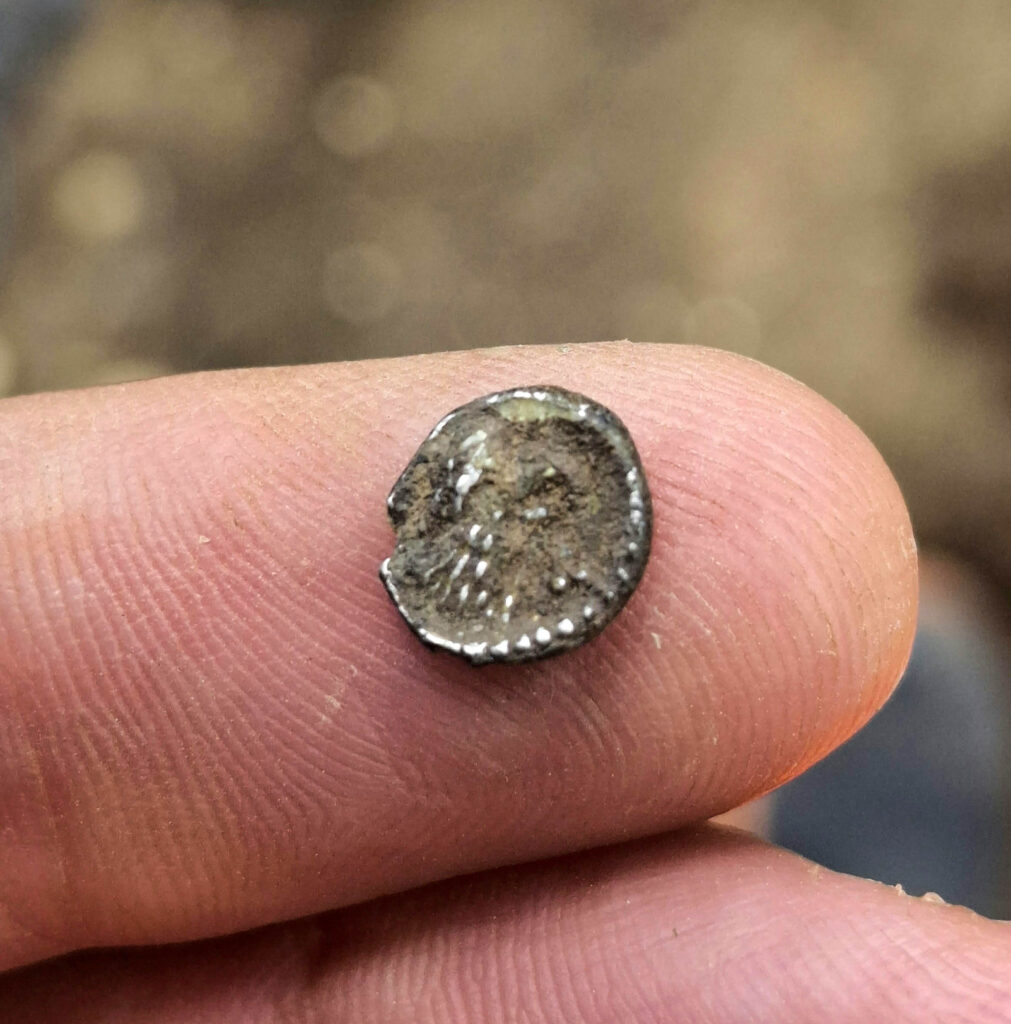
Last week, PCA had the pleasure of visiting St Thomas More Catholic First School to share the wonders of archaeology with their enthusiastic Year 3 students. Our archaeologist, Gareth Morgan, gave an engaging talk about the world of archaeology.
The highlight of the day was a hands-on session, where the students explored a variety of artefacts—from ancient pottery to a real dinosaur tooth! The excitement in the room was infectious, with both children and teachers eagerly examining the objects and asking insightful questions.
At PCA, we’re passionate about inspiring young minds and showcasing the value of archaeology in understanding our shared past. Seeing the curiosity and joy on these students’ faces reminds us of why we do what we do!
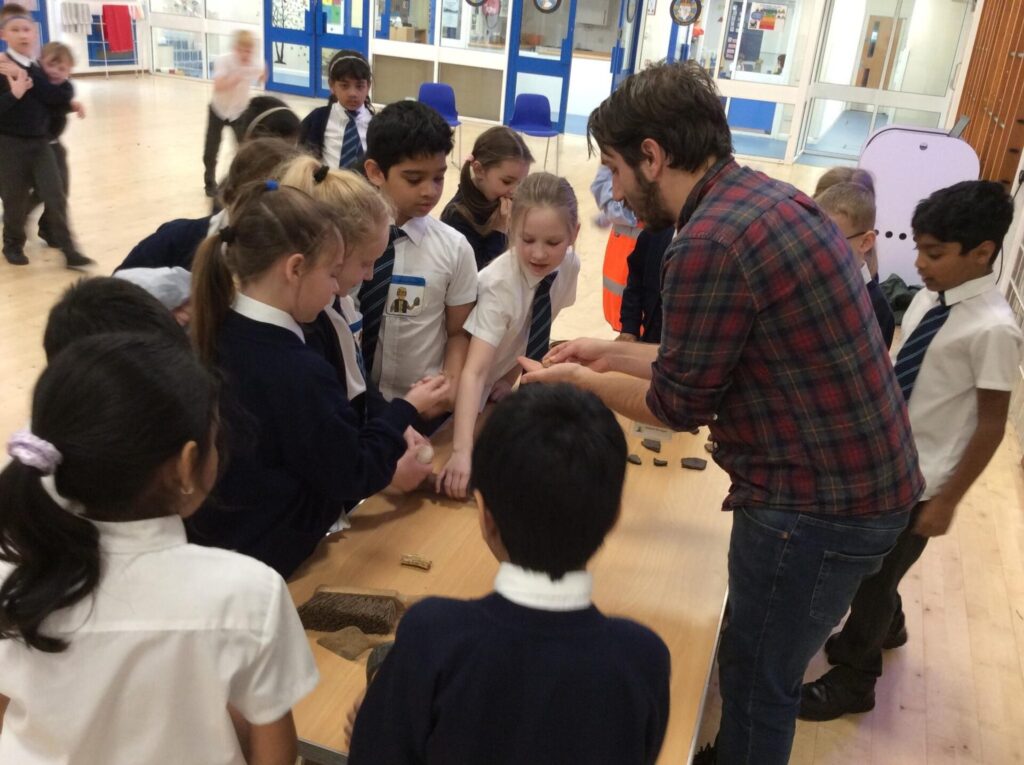
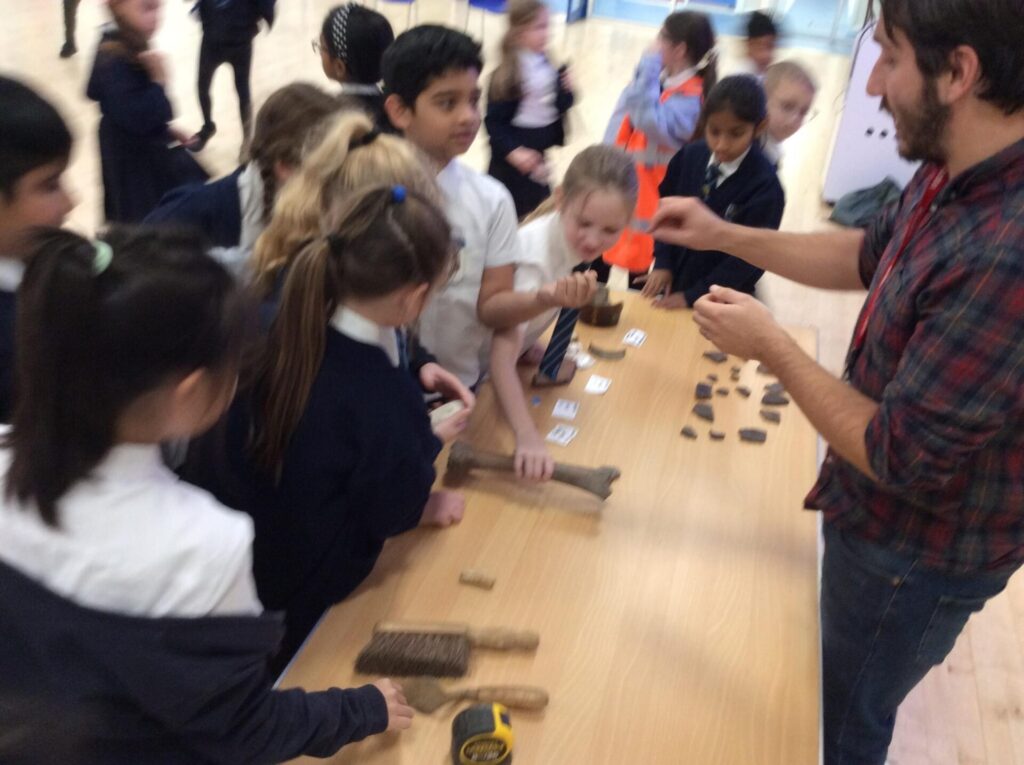
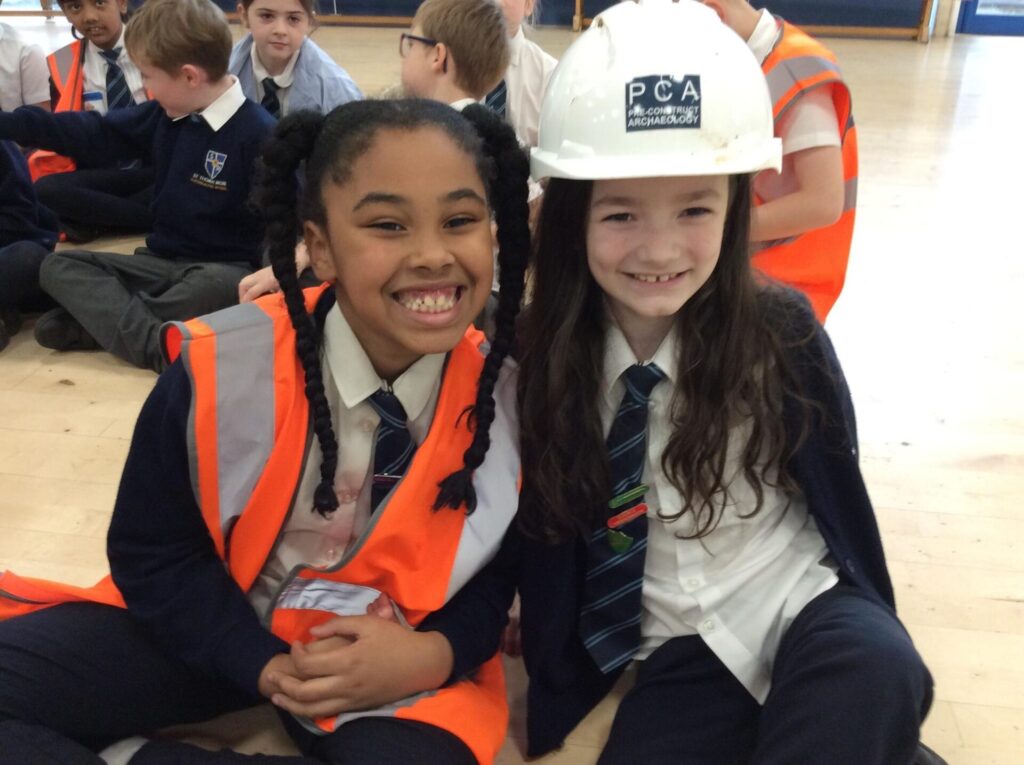

Kathy Davidson will speaking to The City of London Archaeological Society on Friday 15 November about PCA’s recent work at Newgate Street. This is a hybrid lecture – you can attend in person at St Olave’s Church, 8 Hart Street, London EC3R 7NB, or online through Zoom, you will receive the login information for the online meeting once you register:
.
The former GPO site on Newgate Street was one of the most significant excavations conducted by the DUA in the City of London during the 1970s. This key site revealed late Iron Age and early Roman buildings from early Londinium, late Saxon structures, and traces of medieval occupation. Additionally, it revealed remains of the 12th-century church of St Nicholas Shambles and its associated cemetery.

The building constructed after the 1970s work was recently extended and its basement enlarged. Our team, led by Kathy Davidson, excavated the surviving archaeology over a trench measuring 25m by 4.5m. Surprisingly, there were no medieval burials, suggesting they might have been removed during 19th-century developments. However, we did discover human remains in an unexpected location.
The excavation revealed well-preserved sequences of medieval rubbish pits, extensive Roman buildings, and early 1st-century AD quarries. Evidence from the Roman phases strongly suggests that smiths were working either on-site or nearby, which will be a focal point for further investigation and publication.

This week’s #FindsFriday is an unfinished Neolithic axe from Suffolk, known as a preform. There’s an issue with its butt end (the top part) which meant that, despite being nearly complete, it couldn’t be finished.
Fascinatingly, the face in the right-hand image shows around three undeveloped points of percussion from being struck hard. It’s tempting to imagine the knapper, realising the flaw, took a few frustrated whacks at it!


There’s a great lineup at the LAF this autumn – with presentations on topics ranging from the Ice Age to the Georgian period. And the winner of the prestigious London Archaeological Prize – the ‘publication prize’ – for works published in 2022/2023 will also be announced.
When: Monday, November 18 from 6-7:30pm GMT
Where: UCL Institute of Archaeology, 31-34 Gordon Square, London WC1H 0PY
Booking is free and anyone with an interest in London’s archaeology is very welcome. Register for your place before 1pm on 18th November.
Here are the contributors and their topics:
- Matt Pope, Associate Professor at the Institute of Archaeology, will discuss London’s Ice Age archaeology and environments. He will explore the rich record of Greater London’s Ice Age past through key sites and the history of their discovery, from first recorded Palaeolithic tool to be found through to recent professional commercial excavations. He’ll also consider evidence for how London’s landscape was shaped by ice and water, and how early human populations adapted, or not, to the dramatic cycles of climate change evidenced in the gravels and clays of the city’s deep past.
- Alistair Douglas, Senior Archaeologist and Health and Safety Manager at Pre-Construct Archaeology, will report on PCA’s recent archaeological Investigations on and around Bermondsey Square in Southwark. He’ll focus on the period before the foundation of Bermondsey Priory (later abbey) including tantalizing evidence of Iron Age, Roman and Saxon settlement of Bermondsey.
- John Schofield, who has worked at former Museum of London and as Consultant Archaeologist to St Paul’s, has written extensively about the archaeology of the City, most recently London’s Waterfront 1666 to 1800 and its World. He will describe waterfront excavations of 1974-84 that revealed post-Great Fire buildings and intriguing aspects of London’s crucial involvement in slavery: cowrie shells, found in the floor levels of warehouses near Billingsgate of around 1700.
- Alison Telfer of MOLA is on the committee of London Archaeologist and coordinates the administration of the London Archaeological Prize, awarded biennially for the best publication of the preceding two years. She will be announcing the winner and awarding the prize at the LAF.
Click here for further details
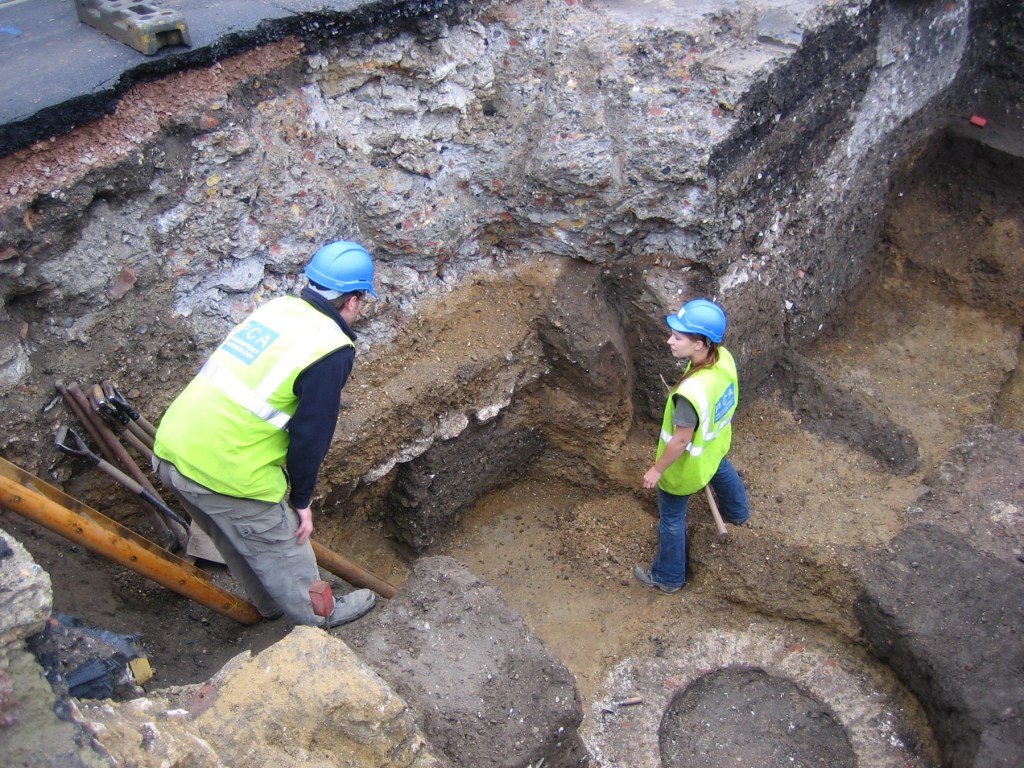
Evidence for a possible Saxon minster in section during excavations at Bermondsey Square.

Mark Hinman will be presenting alongside Charlotte Lockwood at the upcoming CAS Autumn Conference in Cambridge. They will discuss their recent excavations of an extraordinary early Saxon settlement at Great Chesterford. The site offers invaluable insights into early medieval life, and Mark and Charlotte look forward to sharing their findings.
The conference will take place on Saturday 9th November at Cripps Court Magdalene College, Cambridge.
Click here for further details.


This beautifully decorated 5th-century AD Saxon comb case, from a site in Essex, would have kept a fragile comb safe. The intricate carvings and animal head finials highlight the artistry of the period, suggesting that everyday items were created with aesthetics in mind.
Click here to check it out from all angles in our 3D model on Sketchfab!


Today, we’re excited to share a glimpse into Roman Winchester’s southern cemetery, where recent work has revealed an intriguing burial assemblage. The black vessel held a cremation and it was found with two bow brooches and two Samian dishes — one of which served as a protective lid over the cremation. This site has also revealed several inhumations. Though the cemetery along the Roman road is relatively well-known, each find continues to add new insights into burial customs and personal belongings of the time. #FindsFriday




Join us on Saturday, 2 November 2024, at the Central Library, Milton Keynes, where Mark Hinman and Judy Mlynarska will showcase some of the incredible archaeology uncovered during PCA’s recent excavations in the area.
Their presentation From Roundhouses to Roundabouts: Uncovering an Iron Age and Early Roman settlement at Milton Keynes East will be part of MK Archaeology Day, a free event open to all, with additional activities, displays, and talks throughout the day.


#FindsFriday This week we have an exciting find – a silver minim of Caratacus, known as a Caratacus Car type, dating c. 40-43. Caratacus was one of the sons of Cunobelin and one of the rulers who fought against the incoming Romans.
Only one example of this coin was previously known, so this is only the second known example! The obverse has the letters CAR while the reverse depicts an eagle with three pellets. This remarkable find comes from an assemblage of Celtic coinage retrieved during recent excavations in Buckinghamshire.

